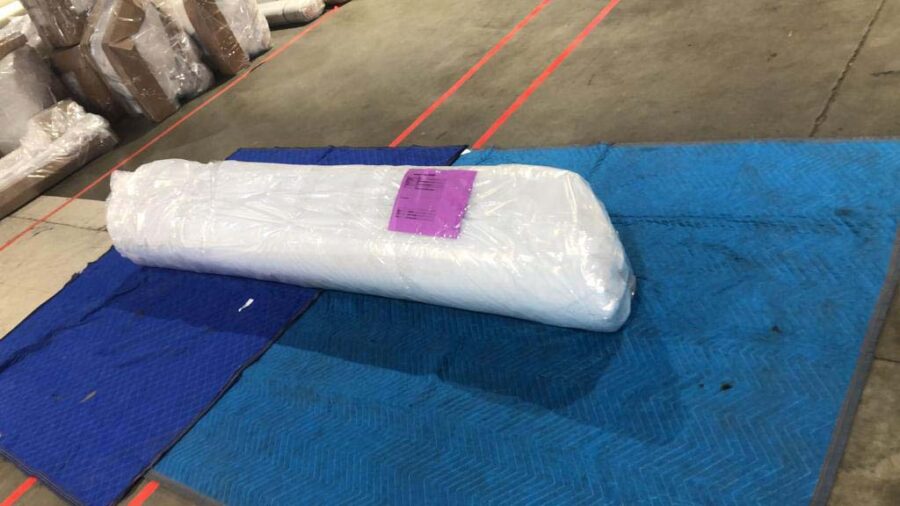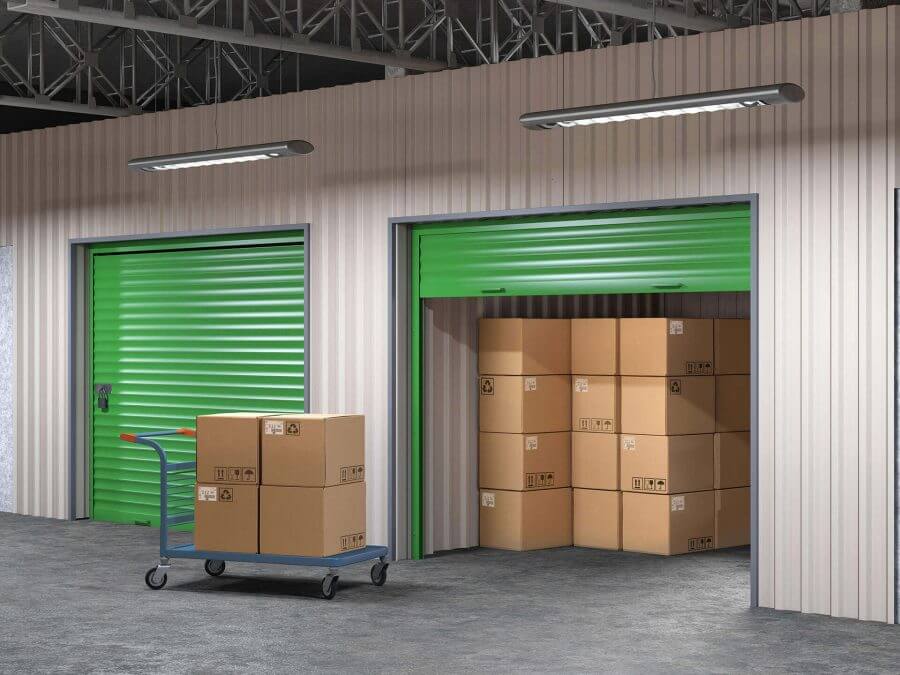

Mastering the Challenge of Moving Large Items
Posted in Moving Tips & Tricks on May 22, 2023
Moving can be a thrilling adventure as we embark on a new chapter in our lives. However, when faced with the daunting task of moving large items across the country, that excitement can quickly give way to stress and anxiety.
Whether it’s a grand piano, an antique wardrobe, or a cumbersome piece of furniture, maneuvering these hefty belongings requires careful planning, precise execution, and the right set of skills. We’ll explore the practical tips, expert advice, and innovative solutions that can transform this overwhelming endeavor into a well-organized and successful operation. If you’re preparing for moving across the country, this guide will equip you with the knowledge and strategies needed to conquer even the most formidable objects.
The Significance of Mastering Moving Large Items
If you’re wondering how to move something heavy like furniture and equipment, you should know that mastering the skill of handling large items holds immense significance in the world of relocations. When you’re planning moving cross-country to another city, the ability to handle bulky, heavy, or delicate possessions with expertise can make all the difference.
The significance lies not only in ensuring the safety and protection of valuable belongings but also in saving time, effort, and potential costs associated with damages. By mastering relocating furniture and other large objects, individuals can gain the confidence to tackle even the most challenging things, streamline the relocation process, and deliver a seamless experience for themselves.
Moreover, this mastery empowers individuals to take on unique situations, such as navigating narrow hallways, stairs, or tight corners, with precision and finesse. It could come in handy after the move when you’re settling in and choosing the layout of your new home.
The Assessing and Planning Part
If you’re wondering how to move heavy items, know that dedicating time to assess and plan the logistics of relocation means you can gain a comprehensive understanding of the task at hand. This includes identifying the specific large items that need to be moved, evaluating their dimensions, weight, and fragility, and determining the resources required for a smooth transition.
Through this process, potential challenges can be identified, and appropriate solutions can be devised, such as allocating the necessary manpower, selecting the right equipment, and creating a detailed timeline in your to-do list.
Evaluating Large Items
Each large item comes with its own set of considerations and requirements. It is essential to evaluate the nature of these items to determine the appropriate packing materials, handling techniques, and transportation methods.
When packaging fragile items, you may need special care and protective wrapping with bubble wrap or packing paper. On the other hand, heavy and bulky objects such as mattresses and similar things may necessitate the use of specialized equipment such as dollies or furniture sliders.
Measuring and Assessing Obstacles
One of the key challenges in handling large items is navigating through obstacles such as narrow doorways, staircases, or tight spaces. Measuring and assessing these potential hurdles in advance is crucial to avoid costly damages or delays during the move.
Accurate measurements of the large items, such as a desk or a dresser, and the available spaces help determine the feasibility of handling them and identify any necessary modifications or alternative routes.
Developing a Strategy
A well-thought-out strategy involves considering factors such as the order in which items should be moved, the sequencing of tasks, and the coordination of manpower and resources. A strategic approach ensures that relocation progresses smoothly and minimizes the risk of accidents or damages so you can relocate safely. Additionally, it helps optimize time and effort, making the entire process more efficient.
Gathering the Right Tools and Equipment
Just like you need to figure out how many boxes you’ll need, it’s essential to gather an array of specialized tools and supplies that are specifically designed for the task at hand. These may include furniture dollies, moving straps, padding and blankets, stretch wrap, and various sizes of sturdy boxes. By ensuring that you have the necessary tools and equipment on hand, you can enhance safety, relocation efficiency, and protection during the relocation process.
The Necessary Tools for Moving Large Items
When it comes to such a difficult and demanding task, having the necessary tools can greatly facilitate the process. Here are some essential tools to have on hand:
- Tape measure – for accurately measuring dimensions of doorways, hallways, and furniture to ensure a smooth passage.
- Utility knife – useful for cutting through packaging materials, opening boxes, and removing protective coverings.
- Screwdrivers or wrenches – necessary for disassembling and reassembling furniture or removing fixtures for easier transportation.
- Moving pads or blankets – provide cushioning and protection for delicate and fragile surfaces, preventing scratches or damage during handling.
- Furniture sliders – enable easier movement of heavy items across different surfaces, reducing strain on movers and potential damage to floors.
- Bubble wrap or foam – ideal for wrapping fragile items individually, providing a protective layer to prevent breakage or damage.
- Stretch wrap – helps to secure and bundle items together, ensuring they stay in place during transit.
- Gloves – protect hands and improve grip when handling large and heavy items, reducing the likelihood of accidents or injuries.
Having these necessary tools readily available will make the process of moving large items safer, more efficient, and better equipped to protect your belongings.
Equipment for Heavy Lifting
Equipment specifically designed for heavy lifting includes items like furniture dollies, hand trucks, and lifting straps or harnesses. These tools are engineered to distribute the weight of large items evenly, reducing the strain on individual movers and minimizing the risk of injuries.
Straps or ropes are essential for securing large items to prevent shifting and maintain stability during transportation. Moving dollies or hand trucks, on the other hand, are designed to bear the weight of heavy items and facilitate their movement, reducing the risk of injuries.
Protecting Large Items
By taking the time to protect large items properly, you can safeguard them from scratches, dents, or other forms of damage that can occur during handling or transportation. Paying close attention to protective measures ensures that your valuable possessions arrive at their destination in the same condition they were in before the move.

How to Move Something Heavy – Proper Lifting Techniques
Moving something heavy requires proper lifting techniques to ensure both your safety and the integrity of the item being moved. Here are some guidelines to follow when faced with the task of handling a heavy object:
- Before attempting to lift a heavy item, warm up your muscles with light stretching or a brief walk to prepare your body for physical exertion.
- Evaluate the object’s weight and determine if you can safely handle it alone. If it’s too heavy, seek assistance from others to avoid strain or injury.
- Consider the best path and destination for the item, taking into account any obstacles, stairs, or narrow spaces that may require additional effort or adjustments.
- Stand close to the object with your feet shoulder-width apart for stability. Bend at your knees and hips, not your back, while keeping your back straight.
- Ensure you have a firm grip on the object with both hands before attempting to lift it. Use gloves or gripper pads if necessary to enhance your grip.
- To lift, push up through your legs while keeping your back straight. Avoid using your back muscles alone, as this can lead to strain or injury.
- Keep the heavy item as close to your body as possible to maintain better control and balance while lifting and carrying it.
- When walking with a heavy object, take slow, deliberate steps, keeping your footing secure and maintaining your balance.
- Whenever possible, utilize moving straps, dollies, or other equipment designed to help distribute the weight and ease the strain on your body.
- If the item is too heavy or awkward to lift safely on your own, ask for assistance from others or consider hiring professional movers with experience in handling heavy objects.
Remember, safety should always be the top priority when handling heavy items.
Tips for Relocating and Disassembling Large Items
When it comes to relocating and disassembling large items, there are several tips to keep in mind for a smooth and successful process. Firstly, removing obstacles and creating a clear path are essential to ensure a seamless movement. Clear out any furniture, rugs, or other items that may obstruct the path, and secure loose cables or cords to prevent tripping hazards.
By creating a clear and unobstructed path, you minimize the risk of accidents and facilitate easier navigation with large items. Additionally, preventing shifting or tipping during transportation is crucial for the safety of both the long-distance movers and the items being transported. Use straps, ropes, or bungee cords to secure the large items firmly in place, ensuring they do not shift or tip over during transit.
The following video gives you some life-saving tips on how to dismantle your office chair so it can easily fit into a relocation truck.
Researching Transportation Options for Moving Large Items Across Country
When you have such a difficult task as long-distance moving ahead of you, researching transportation options becomes crucial for a successful relocation. Start by considering reputable cross-country moving companies that specialize in long-distance moves.
Look for professionals with experience in handling large items and inquire about their specific cross-country moving services and expertise in transporting such belongings. Additionally, ensure proper packing service for your large items, especially for long-distance moves.

Techniques for Safely Loading and Unloading Large Items
Loading and unloading large items on a relocation truck safely requires the implementation of proper techniques to protect both the items and the individuals involved in the process. When loading, ensure that the items are properly secured within the vehicle to prevent shifting during transit.
It’s essential to distribute the weight evenly within the vehicle to maintain balance and stability. During unloading, exercise caution and utilize the same techniques used during loading. Communicate and work as a team to coordinate movements and ensure everyone’s safety.
When to Consider Professional Cross-Country Movers
Considering hiring professional cross-country movers is essential when faced with a complex and long-distance relocation. If you have limited time, a busy schedule, or a lack of experience in handling large-scale moves, professional movers can offer valuable assistance. They have the expertise, resources, and logistical knowledge to navigate the intricacies of a cross-country move efficiently.
Tips for Researching and Choosing Moving Companies
Here are some long-distance relocation tips when you start to research professional movers. Start by seeking recommendations from friends, family, or reputable online sources. Read reviews and testimonials to gauge the company’s reputation and reliability.
Obtain multiple quotes from different relocation companies and compare their services, pricing, and insurance coverage. Verify that the company is licensed and insured on the FMCSA website, providing protection for your belongings throughout the process.
Choose a Long-Distance Moving Company With Appropriate Storage Facilities
Storage service can be necessary if there is a gap between your move-out and move-in dates or if you need temporary storage during the relocation process. Ensure that the relocation company provides secure and climate-controlled storage options for your belongings. Ask about access policies, security measures, and insurance coverage for items stored in their facilities.

When You Apply These Tips, You’ll Master Moving Large Items Successfully
By assessing and planning your move, evaluating the items, and developing a strategic approach, you can tackle the challenge with confidence and efficiency. By implementing the right tips and relocation hacks, you’ll be well-prepared to navigate any obstacles and achieve a successful move, even with the most daunting of large items.
However, if you want to avoid handling bulky stuff, contact Cross Country Movers to take the weight off your shoulders and move the large items with expert precision.
FAQ
How Do I Safely Move Large Items During a Move?
To safely move large items during relocation, use proper lifting techniques, get help from others, and use professional relocation equipment if necessary.
Are There Specific Tools or Equipment Required for Moving Heavy Items?
Specific tools or equipment required for moving heavy items include dollies, hand trucks, furniture sliders, and lifting straps.
What Are the Potential Challenges of Moving Large Items?
Potential challenges of handling large items include their weight, size, and shape, as well as navigating stairs, hallways, and doorways.
How Do I Assess if I Need Professional Help for Moving Large Items?
You should assess if you need professional help for handling large items, if you’re not confident in your ability to handle them safely, or if they require specialized equipment.
Can I Disassemble Large Items to Make Them Easier to Move?
Disassembling large items can make them easier to handle. Just make sure to keep track of all the parts and hardware.
Are There Any Specific Techniques for Lifting and Carrying Heavy Items?
Specific techniques for lifting and carrying heavy items include bending at the knees, keeping the item close to your body, and using lifting straps for additional support.
How Can I Protect Large Items From Damage During Transportation?
To protect large items from damage during transportation, wrap them in protective materials like furniture blankets, bubble wrap, or plastic wrap.
Are There Any Legal Regulations or Permits Required for Moving Large Items?
Legal regulations or permits may be required for relocating large items, depending on their size and weight, as well as the route you’ll be taking.
What Are the Considerations for Moving Large Items Across the Country?
Considerations for relocating large items across the country include finding a reputable relocation company, ensuring they have the necessary equipment and insurance, and planning for any potential delays.
Can I Store Large Items During the Moving Process, and if So, How Should I Prepare Them?
You can store large items during the relocation process, but make sure to clean and prepare them properly, disassemble them if possible, and choose a storage facility with climate control and security measures.






